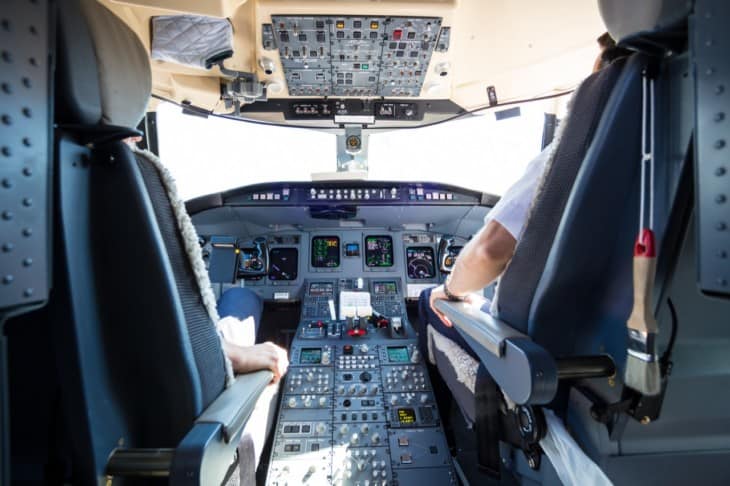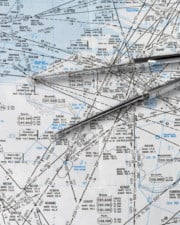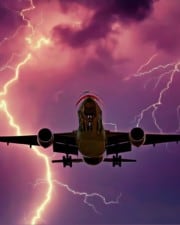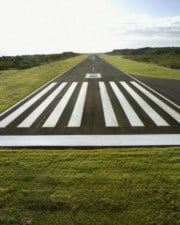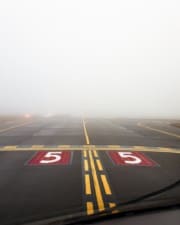One of the most misunderstood jobs in aviation is that of the DPE—the Designated Pilot Examiner. For many student pilots, the DPE that gives their checkride and (hopefully) hands them a license is the first contact they have with the “real” FAA. The problem with that is that DPEs do not actually work for the FAA…
Table of Contents
As the name implies, Designated Pilot Examiners are independent pilots who the FAA designates to conduct pilot exams. Generally, these “designees” are seasoned pilots that come from a training background. They usually have worked in aviation for decades and have flown with many pilots before.
What Does a DPE Do?
A Designated Pilot Examiner helps the FAA by conducting practical exams for airmen applicants. In other words, they are experienced pilots who are given the power to conduct checkrides and issue pilot certificates on behalf of the FAA.
But, you don’t have to fly with a DPE to get a license. It is possible to go directly to the FAA and request a checkride, in which case you would fly with an ASI—an Aviation Safety Inspector. Both an ASI and a DPE will conduct the checkride using the same guidelines and criteria, so there shouldn’t be any difference in one between the other.
In actuality, however, most pilots prefer to use the services of a DPE. A DPE works closely with the FAA, but they are not a government employee. FAA ASIs conduct checkrides free of charge, but they are harder to schedule and tend to take their time. Checkrides are a tiny part of an ASI’s responsibilities, and finding time to squeeze you in may be difficult. This is precisely why there are DPEs in the first place.
DPEs are full-time professionals that do nothing but checkrides. They work closely with instructors and flight schools in their area. They operate as independent contractors and run their own businesses. That means you must pay them for their time–and their services do not come cheap. But it also means that they are professionals and active members of your local aviation community.
A Day In the Life of the DPE
In some parts of the country, DPEs are extremely busy. It’s not uncommon for them to do two checkrides in a day, one in the morning and one in the afternoon. If this is the case, they’ll be dedicated to keeping their flights on schedule. Waiting for the morning fog to burn off might not be an option if the DPE has another flight after lunch.
In quieter regions, DPEs may be more relaxed. They may be more willing to break for lunch and reconvene when the weather is better or the plane is fixed.
Each checkride begins by checking off all of the formalities. One of the biggest responsibilities that DPEs have is to ensure that a pilot meets the minimum eligibility requirements set out in the FARs (Federal Aviation Regulations). That usually means taking a long and careful study of a pilot’s training records and logbooks to ensure that the regulations have been satisfied to the letter.
Once the DPE is satisfied that the applicant is indeed qualified, they will begin by conducting an oral examination. The exam length depends on the rating you are seeking, but generally, most are between 1.5 and 3 hours.
After you’ve passed the oral exam, the DPE moves on to the practical flying exam.
While students often worry about which questions they’ll be asked or what maneuvers they’ll have to show the examiner, the truth is that there are seldom any surprises. Like flight instructors, DPEs follow the ACS (Airmen Certification Standards). The FAA prepares these documents for every rating a pilot could apply for. They contain a list of every task they must complete on the practical exam, along with the standards they must meet for that task.
If the applicant does not meet the ACS minimums at any point during a checkride, the DPE will say so. The applicant has the option to continue the checkride or stop. When they retest, they will only have to complete the tasks they couldn’t complete per the ACS.
Upon successfully completing all of the tasks laid out in the ACS, the DPE will issue the applicant a temporary pilot certificate.
How Much Does an FAA DPE Make?
Fees vary for checkrides depending on the region and the checkride in question. Basic checkrides, like sport pilot or private pilot licenses, are usually less expensive than advanced ratings like multi-engine or Airline Transport Pilot.
A quick search online will usually determine how much DPEs are charging in your area. Currently, private checkrides average around $700, while an advanced rating may be upwards of $900.
A Designated Pilot Examiner’s salary would entirely depend on both how many checkrides they do annually and their costs in getting those checkrides. DPEs operate as independent contractors, i.e., a private business.
How Do I Become a DPE?
DPEs are used in all phases of pilot training, so the minimum requirements to become a DPE depend on what certificates you want to issue.
For experienced instructors and veteran pilots, becoming a DPE is a wonderful career that helps contribute to the aviation community at large. With the increasing demand for pilots in the future and the boom in the flight training industry, DPEs are more in demand than ever before.
Becoming a designee for the FAA is pretty involved and is no small undertaking. After applying through your local FAA Flight Standards District Office (FSDO), you will be called in for an interview and a proficiency flight. After that, there’s an online training course followed by a five-day course at FAA headquarters in Oklahoma City.
Once this training is completed, the FSDO will observe you conducting a checkride. This requirement is repeated annually with the FSDO to ensure you maintain your qualifications.
Private Pilot DPE Requirements
The minimum requirements to become a DPE are outlined in FAA Order 8000.95, Designee Management System (DMS). To be able to conduct private pilot checkrides are as follows.
- Be at least 23 years old
- Have at least 2,000 hours of pilot-in-command (PIC) flight time logged
- Have 100 hours PIC time in the last 12 months
- Have 500 hours of dual instruction given time logged
- Possess a valid flight instructor certificate
- Maintain at least a third-class medical
The number of DPEs that each FSDO needs depends on demand. In some places, the number of DPE applicants far outstrips demand.
For the best chances of becoming a designee, certain factors and experience help. For example, FSDOs prefer to work with applicants who have experience in turbine aircraft, former chief flight instructors or check airmen, or military pilot evaluators.
How to Find a Designated Pilot Examiner
If you’re a pilot needing a checkride, your flight instructor probably knows who to call. You can also try a web search in your area, and some FSDOs maintain lists in their DPE database. But it can be challenging to pick out who specializes in your area for your license.
Flight instructors generally maintain a good working relationship with DPEs in the local area.
FAA DPE Gouge – Tips and Tricks to Pass Every Checkride
Students are always looking for the gouge on their DPE. It’s normal to be worried about what will be on the checkride and what questions will be asked.
But, even though the FAA checkride is pretty intense, there are never any big surprises. Every task asked of you appears in the Airmen Certification Standards (ACS). That should come as no surprise because your instructor has probably been using the ACS throughout your training. Hopefully, you’ve studied it yourself more than once, as well.
Occasionally you’ll hear of an examiner who has a “pet peeve” or fails people for “trivial” things. While there are undoubtedly some less-than-professional DPEs out there, these stories are nearly always blown out of proportion.
The students who get pink-slipped seldom have anything nice to say, and the DPE has a long list of reasons why the student failed. In other words, it’s never a single pet peeve or a trivial thing that causes a busted checkride.
Related Posts
